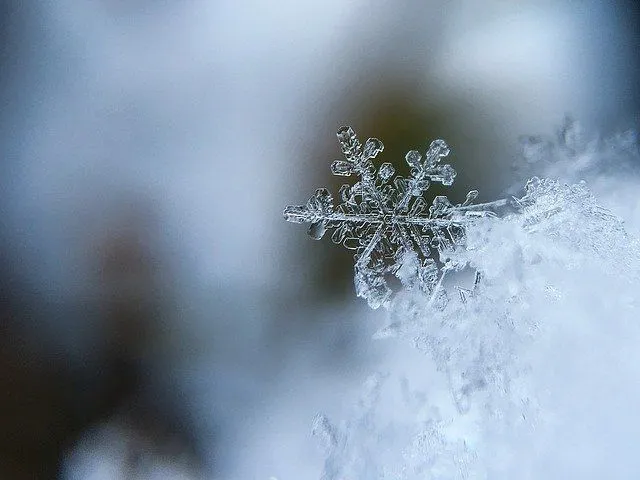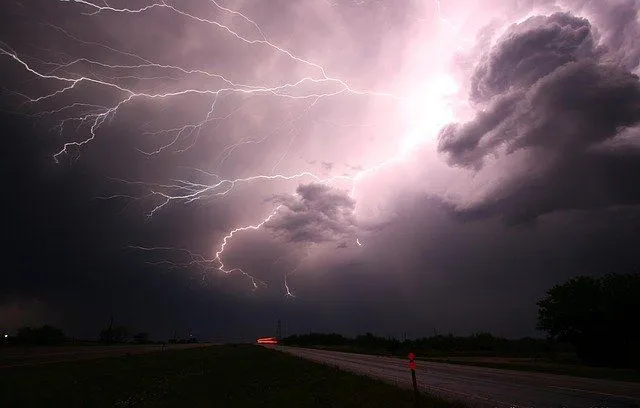FOR ALL AGES
So what is weather?
When you look out of your window or step outside, you can probably describe the weather quite easily, it comes pretty naturally as we've been experiencing it our whole lives! The actual word 'weather', is a term used to describe the conditions of the atmosphere, from calm or stormy, to hot or cold and it can change by the day or even as the day goes on.
Weather and climate are often spoken about together, the difference is that weather describes daily temperatures and atmospheric activity, whereas the climate is measured and changes over much longer periods of time. Climate change can take thousands of years, but recently has been speeding up and has been the cause of some extreme weather.
Read on to explore out some interesting weather facts, we've looked at lots of different types and found some cool facts about the weather and trivia about weather, and all the havoc it can cause!
After checking out these interesting facts about weather for kids, why not take a look at these water conservation facts, and facts about the asthenosphere?
A lot of weather and climate facts focus on hot weather, and for good reason! The Earth is heating up every year, due to climate change, and this is causing more extreme weather all over the world. Check out these warm weather facts, but watch out, they're hot!
1. The sun is the most important source of energy for Earth. It generates weather patterns, provides the energy plants need so that they can grow, and provides the oxygen and food that we need to survive!
2. If the sun was to suddenly disappear, we wouldn't notice for another eight minutes as this is how long it takes sunlight to reach Earth.
3. Seasons, ocean currents, weather and climate are all driven by the connection between the sun and Earth.
4. Satellite temperature data collected over seven years, showed the consistently hottest place on Earth to be the Lut Desert in Iran. The highest temperature the desert reached was a staggering 70.7°C (159.3°F)!
5. Heat waves are caused by air trapped by high pressure systems, the air is forced downwards and can't rise into the cooler upper atmosphere, precipitation can't happen so it continues to heat up!
6. Facts about climate and weather are possible to record thanks to The World Meteorological Organization, this UN agency is in charge of verifying figures like the hottest day ever recorded.
7. If it can be verified by the WMO, then the recently reported 54.4°C (130°F) temperature recorded in Death Valley California on 16 August 2020 could be the hottest temperature ever recorded.
8. Did you know heatwaves can cause steel train tracks to bend? The immense heat causes the steel to expand and then buckle, causing major problems on the railway lines.
9. Thunderstorms occur most often in hot and humid environments, these tropical storms can come on quickly and cause major damage, especially if there is hail combined with strong winds and lightning.
10. It has been estimated that a lightning strike is hitting the Earth's surface around 44 times a second, in any given place. That creates a total of almost 1.4 billion lightning strikes a year!
11. Hot weather plays a big role in wildfires. Drought can lead to the perfect conditions for a fire. The leaves and underbrush covering the ground trap heat from the sun, which can spark the fire.
12. Tornadoes can be created within wildfires, these are called fire whirls. Thankfully fire fighters in areas where wildfires are common are highly trained in dealing with them, in fact, controlled fires are often carried out to rid the ground of the dry debris that could otherwise be kindling for a raging wildfire.
Rain rain go away! We all know this nursery rhyme but sometimes a little rain is good news. We need rain to water our crops, provide hydration for wild animals, and refill our rivers and lakes after a long stretch of dry weather. Check out these weather facts all about water and what it can do, and don't forget your umbrella!
13. Raindrops come in many sizes but travel quickly, some rain falls at more than 30 kmph!
14. In Kerala, India bright red rain has been known to fall! Although scientists initially thought the red rain came from a meteor burst, it turns out it was actually colored red by the airborne spores of a type of algae!
15. Did you know that frogs turn up the volume right before it rains? Frog lay their eggs in water, and with the rainfall they are keen to find a mate, and a home for their tadpoles!
16. Much like the fire whirl tornadoes can make in hot weather, tornadoes can appear over water too and these are called 'waterspouts'.
17. Waterspouts are rotating columns of water and air that contain an intense vortex, these can occur anywhere in the world where there is a large amount of water, but seem to be more common in hotter climates.
18. Hurricanes are tropical storms that begin life at sea. The largest hurricane ever recorded was in 1979 in the northwest Pacific Ocean. Named Typhoon Tip, this hurricane was almost half the size of the USA!
Have you ever been caught in a gale? Nothing can cause damage quite like extreme winds, check out these facts about weather, that we sometimes could do without!
19. The windiest place on Earth is Commonwealth Bay in Antarctica. The average annual wind speed here is 50 mph, but winds of over 150 mph are recorded on a regular basis, making it the windiest place on Earth!
20. Some of the windiest places on Earth can be found in Midwest America, Chicago is even known as The Windy City.
21. Tornadoes (or twisters) are rotating columns of air that start in a storm cloud and reach down to Earth. Winds of a tornado can reach speeds of up to 480 kmph!
22. In the United States there is a place known as Tornado Alley, this area between West Texas and North Dakota can have over 200 tornadoes every year!
23. Tornadoes are still one of nature's mysteries, they destroy everything in their path including the equipment needed to measure them!
24. Sandstorms happen when a high amount of wind occurs in sandy spacious areas, most often deserts. The wind is able to reach a speed where it can lift the top layer of sand from the ground and spin it in every direction.
25. In 2009, a week long sandstorm in the Middle East was so huge that it could be seen from space!

Brrrrr, sometimes this planet is just downright chilly! If you happen to live in cold climate, some of these cool weather facts won't surprise you. Facts about weather and climate often focus on hotter temperatures, but extreme weather goes both ways!
26. The coldest temperature ever recorded on Earth was found at the highest point of the East Antarctic Plateau, at the Vostok Weather Station. The record breaking temperature of -89.2°C (-128°F) was recorded in July 1983.
27. A blizzard is an extreme snow storm, characterized by winds reaching over 35 mph, and less than a quarter of a mile visibility for three hours or more. These wild snow storms occur after a big snowfall.
28. The deadliest blizzard in recorded history happened in Iran in 1972 and lasted for almost a week. The snowfall reached 26 feet in some areas and completely enveloped 200 villages in snow.
29. Some snow is better for making snowballs! Snowflakes that fall through temperatures above 0°C will melt a tiny bit around the edges, these flakes stick together easily and make snowballs perfect for an epic snowball fight!
30. Snowflakes that fall through a cooler atmosphere don't melt around the edges and have a more powdery feel. They are great for skiing on, but not so great for making snowballs.
31. There is a super rare weather phenomenon that occurs when the layer of air closest to the ground is warmer than the layers above, but still a low enough temperature to allow snow. Thundersnow is the name given when lightning and thunder are present in the snowstorm.
32. During the Great Freeze of 1684 it was so cold in London, England that the River Thames froze solid for two months!
33. Large volumes of snow absorb sound waves! This explains the eerie silence that can be noticed if you step outside after a heavy snowfall.
34. Instead of using salt, which can actually harm the environment, some cities have started using surprising methods to help clear the roads from snow. Did you know that beer waste, pickle brine and beet juice can all melt ice?

Have you ever thought about becoming a meteorologist? Take a look at these fun facts about meteorology and see what you think!
35. The word meteorology comes from two Greek words, 'meteroros' and 'logia', meaning "in the sky" and "study".
36. The first weekly weather forecast was printed in the London Times, in 1861. Now we can just check an app!
37. There are six main types of weather: wind, humidity, precipitation, temperature, atmospheric pressure and cloudiness. A combination of these factors is used to describe the weather.
38. Meteorologists get to travel all over the world, researching facts about weather and climate and reporting back.
39. Recording air pressure, weather patterns, wind speed and direction, humidity, temperature, and many other factors is all part of the job in order to accurately analyse and predict the weather.
40. To become a meteorologist you will need a Bachelor of Science Degree in either Meteorology or Atmospheric Sciences, if you've enjoyed these fun facts about weather it could be the career for you!
Here at Kidadl, we have carefully created lots of interesting family-friendly facts for everyone to enjoy! If you liked our suggestions for these facts about the weather, then why not take a look at these seaside facts, or chloroplast facts?
Read The Disclaimer
At Kidadl we pride ourselves on offering families original ideas to make the most of time spent together at home or out and about, wherever you are in the world. We strive to recommend the very best things that are suggested by our community and are things we would do ourselves - our aim is to be the trusted friend to parents.
We try our very best, but cannot guarantee perfection. We will always aim to give you accurate information at the date of publication - however, information does change, so it’s important you do your own research, double-check and make the decision that is right for your family.
Kidadl provides inspiration to entertain and educate your children. We recognise that not all activities and ideas are appropriate and suitable for all children and families or in all circumstances. Our recommended activities are based on age but these are a guide. We recommend that these ideas are used as inspiration, that ideas are undertaken with appropriate adult supervision, and that each adult uses their own discretion and knowledge of their children to consider the safety and suitability.
Kidadl cannot accept liability for the execution of these ideas, and parental supervision is advised at all times, as safety is paramount. Anyone using the information provided by Kidadl does so at their own risk and we can not accept liability if things go wrong.
Kidadl is independent and to make our service free to you the reader we are supported by advertising.
We hope you love our recommendations for products and services! What we suggest is selected independently by the Kidadl team. If you purchase using the buy now button we may earn a small commission. This does not influence our choices. Please note: prices are correct and items are available at the time the article was published.
Kidadl has a number of affiliate partners that we work with including Amazon. Please note that Kidadl is a participant in the Amazon Services LLC Associates Program, an affiliate advertising program designed to provide a means for sites to earn advertising fees by advertising and linking to amazon.
We also link to other websites, but are not responsible for their content.
Was this article helpful?



Browse Category



We’ll send you tons of inspiration to help you find a hidden gem in your local area or plan a big day out.



Check your inbox for your latest news from us. You have subscribed to:
Remember that you can always manage your preferences or unsubscribe through the link at the foot of each newsletter.